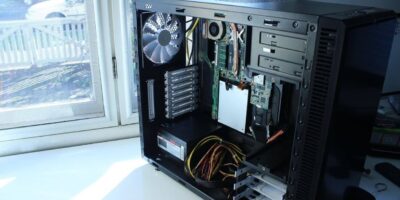
Smart home automation is the use of technology to control and monitor various devices and systems in your home, such as lights, thermostats, locks, cameras, sensors, and more. By connecting these devices to the internet, you can access them remotely from your smartphone, tablet, or computer, and create personalized routines and scenarios that suit your lifestyle and preferences.
Smart home automation can offer many benefits for your safety and security, such as:
– Saving energy and money by adjusting the temperature, lighting, and appliances according to your schedule and presence.
– Protecting your home from intruders by locking the doors, closing the windows, and activating the alarm system when you leave or go to bed.
– Monitoring your home from anywhere by viewing live or recorded footage from your security cameras, receiving alerts from your motion sensors, and communicating with visitors through your smart doorbell.
– Preventing accidents and disasters by detecting smoke, fire, water leaks, carbon monoxide, and other hazards, and notifying you or the authorities in case of an emergency.
– Providing convenience and comfort by allowing you to control your home with your voice, gestures, or a simple tap on your screen.
However, smart home automation also comes with some risks and challenges that you need to be aware of, such as:
– Privacy breaches by hackers who can access your personal data, spy on your activities, or take over your devices.
– Compatibility issues by devices that use different protocols, standards, or platforms, and may not work well together or with your existing network.
– Reliability problems by devices that depend on internet connection, power supply, or batteries, and may malfunction or stop working in case of an outage or failure.
– Maintenance costs by devices that require regular updates, repairs, or replacements to ensure optimal performance and security.
Therefore, if you want to enjoy the benefits of smart home automation while minimizing the risks, you need to follow some best practices for securing your home with automation, such as:
– Researching the devices before buying them and choosing reputable brands that offer high-quality products with strong security features and customer support.
– Securing your network by using a strong password, enabling encryption, updating the firmware, disabling unused features, and installing a firewall or a VPN.
– Securing your devices by changing the default settings, creating unique passwords, enabling two-factor authentication, updating the software, and deleting unused apps.
– Securing your data by limiting the information you share with third-party services or apps, reviewing the privacy policies and permissions of the devices and apps you use, and deleting or transferring your data when you sell or dispose of a device.
Smart home automation is a powerful tool that can improve your safety and security in many ways. However, it also requires careful planning, installation, and maintenance to ensure that it works properly and safely. By following these tips, you can make your smart home smarter and more secure.


